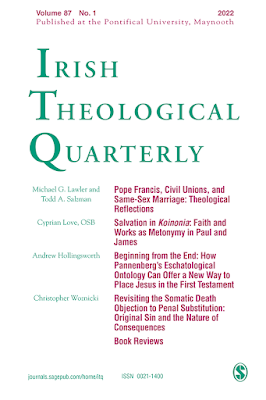Fifty Catholic Churches to See Before You Die. By Elena Curti. Leominster: Gracewing, 2000. Pp 280. Price £14.99 (pbk). ISBN 978-0-85244-962-2.
Reviewed by: Patrick Comerford, Diocese of Limerick and Killaloe
For much of this year, I have been blogging a daily prayer diary, focussing each morning on a cathedral, church or place of worship, linked each week with a common theme, such as Pugin or Wren churches, Spanish cathedrals, Dublin synagogues, Greek monasteries, Benedictine abbeys or Carmelite friaries.
Each theme has allowed me to draw on rich stream of spirituality week after week. But, inevitably, someone asks why their favourite place was not included in a selection of seven in any one week. It is an envious task to list your favourite restaurants, holiday destinations, movies or books, and omissions are seldom forgiven by those who would have made a very different choice.
But, on a positive note, there are those who come back, saying they had never thought of a visit to a church or cathedral, and promising to visit it when the next opportunity arises.
Elena Curti has set herself an impossible and thankless task with this book. She has limited her scope, confining herself not only to Catholic churches but also to Catholic churches in England and Wales, which is not indicated in the title, but it is confirmed on the back cover.
Elena Curti is an Italian-born English writer and journalist. She has been a Deputy Editor of The Tablet and now specialises in writing about Catholic heritage and conservation.
It is easy to ask why she chose England and Wales, and not just England, or all these islands. But perhaps this is because England and Wales have one hierarchy separate from Scotland and, of course, from Ireland, and she has worked closely during this project with the Patrimony Committee of the Bishops’ Conference of England and Wales.
Limiting herself to churches, Elena Curti has ruled out some of the great Catholic cathedrals of England, including Westminster Cathedral, Saint George’s Cathedral, Southwark, Saint Chad’s Cathedral by Pugin in Birmingham, and – love it or hate it – the Cathedral of Christ the King or ‘Paddy’s Wigwam’ in Liverpool.
But here is a very personal, if not eclectic, choice of 50 churches. They include Gothic Revival, neo-Classical, Byzantine, Arts and Crafts and Modernist buildings, mostly built after Catholic Emancipation, but a few built before the Reformation.
Everyone is going to find some of their favourite churches are missing, everyone is going to question some of the choices, and every reader is going to find churches that must be added to the ‘must-see’ list.
My favourite church is included in her shortlist: Saint Giles in Cheadle was commissioned by John Talbot, 16th Earl of Shrewsbury, whose marriage to Maria Theresa Talbot of Castle Talbot, Co Wexford, brought about Pugin’s introduction to Ireland. Pugin called this ‘perfect Cheadle, my consolation in all afflictions.’
There is a short selection of other Pugin works, including Saint Augustine’s, Ramsgate, and Saint Cuthbert’s Chapel at Ushaw College, Durham, but not, for example, his chapel at Saint Mary’s College, Oscott; (a personal favourite) Holy Cross Church, Lichfield, which influenced his designs for Saint Michael’s Church, Gorey, Co Wexford; or Saint Mary, Uttoxeter, which is relegated to a footnote in her account of Cheadle.
Her pre-Reformation churches include Saint Ethelreda, a late 13th century church at Ely Place in Holborn, which was acquired for the Rosminians in 1873, and the Slipper Chapel in Walsingham.
There are the peculiar stories of how Lord Arundell built All Saints’ Chapel in 1776 as part of his private chapel at Wardour Castle; of the ‘Hidden Chapel’ in a roof at Bar Convent in York; of Saint David’s, Pantasaph, an Anglican Church until the Earl of Denbigh decided to become a Catholic, causing a celebrated court case; and of Saint John and Saint Mary, built a year apart and within 200 yards of each other in Wigan.
Perhaps Saint John the Baptist in Brighton was selected because of its curious links with Mrs FitzHerbert, who entered a clandestine marriage with George IV when he was Prince of Wales.
There are ugly churches too, including Saint Monica’s, Bootle, which looks more like a power station; and Saint Francis Xavier, Hereford, dismissed by Pugin as ‘the new Catholic concert room.’
There are churches that every reader will be familiar with, including Farm Street Church in London, Brompton Oratory, or know the names of, such as Buckfast Abbey, Ampleforth, Downside, or Saint James, Spanish Place.
And there are churches to add ‘must-visit’ lists. Mine now includes Saint John the Baptist, Rochdale, with its mosaics of ‘powerful emotional intensity,’ and the Sacred Heart and Saint Catherine in Droitwich, modelled on the basilicas of Ravenna.
There are more than 50 churches, when one counts in the footnotes and addenda, and there are useful notes on architects, artists and architectural vocabulary. But, because the churches are listed alphabetically by town, rather than being held together by architect, style or region, this may not succeed in being a useful guide. But it is certainly going to inspire readers to draw up their own ‘must-visit’ lists, or to return again with a fresh approach to churches they are already familiar with.
This book review is published in The Irish Theological Quarterly (Maynooth), Vol 87 No 1 (February 2022), pp 78-80.


No comments:
Post a Comment